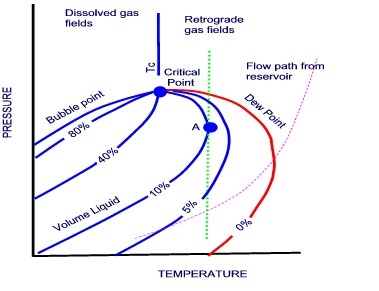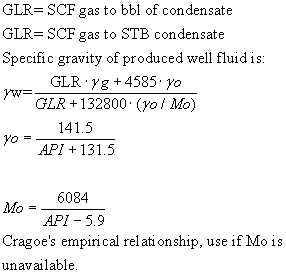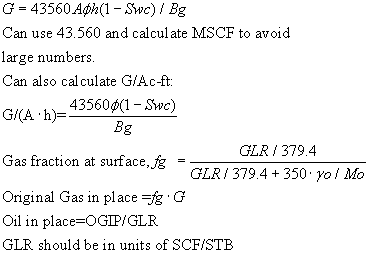Phase Behavoir
Gas condensate field produce mostly gas, with some liquid dropout, frequently occurring in the separator. The phase diagram shows the retrograde gas field must have a temperature higher than the critical point temperature. The vertical line on the phase diagram shows the phase changes in the reservoir, while the curve line shows these changes as the fluid cools going up the wellbore and into the separator.
In both cases, liquids drop out as the pressure drops below dew point pressure.
With the retrograde condensate, the %liquid begins to increase to point "A" then decreases with further pressure declines. Thus the name "retrograde" meaning to retreat or go back. So first condensation and then vaporization occurs, and this vaporization can help in further recovery of liquids.


